2014 was an exciting year for Advance and we thought you’d enjoy a record. But first, most importantly congratulations to you all. We have been delighted to see how all the children have been thriving over this last 12 months, thank you all for your reports and stories.
You may remember  Caudwell Children had a surprise for us at the end of April when we had a call asking if Peter Andre (who is a Caudwell Ambassador) could make a visit and would we mind if they filmed it. Linda Scotson of course didn’t know who he was, but the parents soon enlightened her and somehow the day came Advance was very full. Peter arrived with his partner who is a medical student and with their beautiful 3 month old baby girl.
Caudwell Children had a surprise for us at the end of April when we had a call asking if Peter Andre (who is a Caudwell Ambassador) could make a visit and would we mind if they filmed it. Linda Scotson of course didn’t know who he was, but the parents soon enlightened her and somehow the day came Advance was very full. Peter arrived with his partner who is a medical student and with their beautiful 3 month old baby girl.
He just gave his heart to everyone, like a lifelong friend. Peter very considerately listene d to all the parent’s evocative stories and hopes with attentive empathy. He further magically interacted with the children themselves. There were also of course cakes and buns and tea and laughter and a party atmosphere around the therapy with plenty of wonderful photos as souvenirs.
A local prep school Brambletye, known for its generous hearted parents and friendliness of its students and staff made us their charity of the year. David Holden their magnificent art teacher who put us forward is also a runner like Doran.
Doran began attending Dave’s Sunday morning art classes and they ran the Eastbourne half-marathon together in one hour and 36 minutes. Later in June Dave, Doran and his good friend Ross (an Advance father) ran the Seaford half-marathon in 1 hour and 45 minutes. Doran fell a hundred yards from the finish, but notwithstanding bloody knees with his friends help he rose from the promenade and went on to a glorious finish with £2,000 sponsorship money raised. Fundraising is crucial for Advance. We are enormously grateful to all of those who have helped us to help more children and especially to The Tree of Hope and Caudwell Children charities that are always unfailingly there to support our families.
In mid July, Brambletye School held its famous annual art Auction for Advance. Two of Doran’s watercolours went for £50 each and an oil painting of Linda’s which she dug out of the attic went for £100. Gradually more and more paintings by local talented Brambletye staff, artists and ex-Brambletye students, now professional artists wen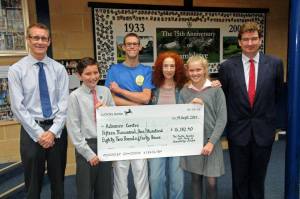 t under the hammer for Advance.
t under the hammer for Advance.
Come September the school had raised £15,000! This is not only keeping us solvent, but allowing us to make vital repairs, to buy a new mandatory deluge tank for the HBO chamber and to help more families in different ways.
After weeks of preparation we returned again to the Autism Show for the 2nd year running. Our equipment consisted of mainly flip boards and didn’t weigh a ton this year. We didn’t get lost finding our way to London ExCel Exhibition Centre this time, nothing broke down and the sun was shining. Our display stand was extremely busy with concerned and curious parents finding out about TST.
![photo[1]](https://advancecentres.files.wordpress.com/2014/06/photo1.jpg?w=225&h=300)
Significantly, Linda was one of the speakers giving a PowerPoint presentation allowing more families to understand why abnormal breathing underlies so many of the symptoms that surround autism/ASDs.
We were well represented by all three of our enormously dedicated Trustees as well as Linda, Ken, Lili, Doran and Tracey Hall-Roberts and her daughter Tatijana who has used TST herself effectively for some years. We were delighted when Tracey after giving us so much support over the years also agreed to become our fourth Trustee!
Quite a number of families contacted u s after the show and we were glad that we had already fitted child gates across our doors.
s after the show and we were glad that we had already fitted child gates across our doors.
Since we were booked to attend the Treating Autism Conference at Brunel University during November we decided to produce a comprehensive well referenced booklet on Breathing and Comorbidities in ASD.
In November, Ken, Lili and Doran represented us at the Treating Autism Conference. Doran is increasingly able to engage parents and express himself and all three felt the warmth and courage of the families attending. The phone rang Monday morning upon their return with a family booking after having read the booklet on the tr ain home.
ain home.
Our next venture is to produce a similar booklet for parents with children with CP and developmental delay which will supply very clear factual information useful for parents themselves and when they are talking to their clinicians or with other parents.
After a long and interesting journey Linda’s MPhil/PhD was accepted by The Institute of Child Health at University College and Linda also gained a new supervisor Paediatric Neurologist Professor Fenella Kirkham. This meant overnight the TST theoretical basis was acceptable academically although the MPhil/PhD upgrade and the viva voce still lay ahead.
A month later in July Linda gave another PowerPoint presentation this time at the University for her MPhil/PhD upgrade. Although rarely nervous when public speaking this time her knees were shaking. When she asked for questions expecting a hard time instead she heard Professor Brian Neville say it’s, “very well written and everything is self explanatory.”Ken who was with her for moral support probably understood she had passed before she comprehended it.
Moreover, Professor Kirkham suggested in putting one of Linda’s studies on the effects of breathing on chest size structure as a poster presentation into the British Paediatric Neurology Conference at Newcastle in January 2015. The poster was accepted. Now only the viva voce lies ahead to achieve her Doctorate next year.
However, on Professor Kirkham’s advice and encouragement Linda has now applied for funding for a cross-over study of TST hopefully to be undertaken next year and once successfully completed TST will be clinically recognised .We greatly appreciate your support.
2014 also saw the Advance Team travelling again. Linda visited Advance South Africa where she was also working with severely disabled children at a respite centre in downtown Johannesburg run by a visionary blind woman called Angie who rapidly became a TST therapist. Unphased by jetlag Janos went to see families in the USA and Dubai. Lili and Linda also spent a January weekend in Spain giving an evaluation and seminar, feeding very engaging stray cats and were very touched by the tremendous warmth of Spanish hospitality.
When six months later Linda returned to South Africa the respite children who had been previously mainly twisted on the floor with little interest in their eyes were transformed into personable individuals now all relaxed and pushing up on their arms taking an interest in their toys and in each other and absolutely loving being photographed.
Moreover, their transformation appeared all the more remarkable having been made partly by their parents who came into the centre in the evening, partly from the staff most of whom had learning difficulties themselves and partly from young people from a school who came in twice a week and delivered the pressures under a “Cheerleader” who chanted out the exercises e.g. down 1,2,3,4, up 1,2,3,4, pause, pause, pause!!
Besides celebrity visits we have many families travelling long distances to see us from Spain, France, Germany, USA, Scandinavia and at least ten families from the Russian federation who have also became part of the family. We enjoy the fun they bring as well as the pleasure of seeing the results of their months of dedication to thei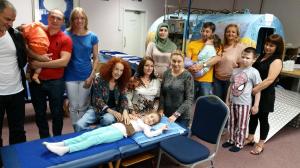 r home exercises on their increasingly lively and able children.
r home exercises on their increasingly lively and able children.
Around this time Lili began asking you all for children’s stories because we are reorganising our CP website to help families with children with developmental delay and CP children find us more early (our sister site http://www.treatbreathinginautism.com seems to be working well). We are now welcoming undiagnosed children who according to parents reports can clearly also be helped by TST. We have many new wonderfully inspiring stories which are also going out regularly on our blog. We rely heavily on your stories to help other parents find out what the approach can do, warmest thanks to all contributors.
Linda’s next step will be the viva in the New Year, but she continues to research and refine the application of TST so that instructors will eventually be able to teach it consistently across the country.
Recently, Advance visited two inspiring charities developed to help young people with ASDs/CP: The Autism Trust at Polly’s Place in Sunninghill, Berkshire and The Tree of Hope Centre which comprises a cafe and a shop in Tunbridge Wells, Kent. Both locations are ideal for us to work towards an Outreach programme to teach families TST who are unable to travel to Advance and with our charities mutually supporting one another we are planning to make this all happen in the New Year.
Finally, one of our Trustees Sarah Pratten has opened a Facebook group dedicated to keeping TST families in contact. If you have undertaken TST then you are very welcome to request joining the group at: https://www.facebook.com/groups/1530827207177358/
We have all truly enjoyed meeting and working with you over 2014 and are here for your help and support in 2015.
Merry Christmas and a very Happy New Year to you all,
Linda
Please Like our Facebook page at:
https://www.facebook.com/pages/Advance-The-Institute-for-The-Scotson-Technique-TST/266138070170881?ref=bookmarks
 t Advance shortly after her first birthday; as a result she has developed very good head control. She is now able to bend and raise her arms and open her hands where as before they were stiff and she had no control over them.
t Advance shortly after her first birthday; as a result she has developed very good head control. She is now able to bend and raise her arms and open her hands where as before they were stiff and she had no control over them.
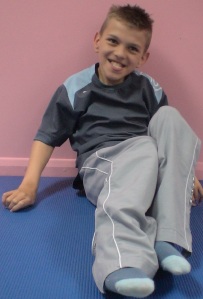

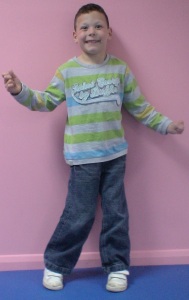
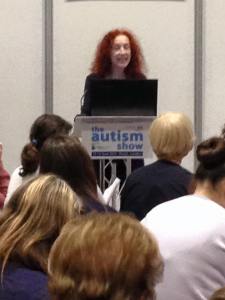
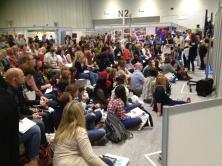
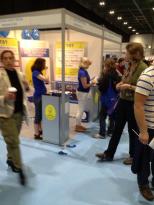
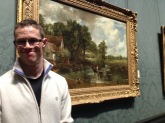
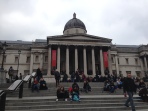


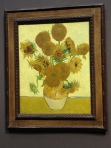
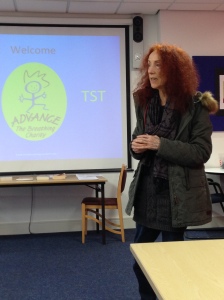 ater a researcher.
ater a researcher. h. Afterwards, she spent 7 days in intensive care where the outlook was not positive. Doctors were unsure what had caused this, as they could not find any medical explanation. Lillie suffered a near miss cot death. As this is unheard of, her prognosis is uncertain. As a result Lillie now has severe hypoxic brain injury.
h. Afterwards, she spent 7 days in intensive care where the outlook was not positive. Doctors were unsure what had caused this, as they could not find any medical explanation. Lillie suffered a near miss cot death. As this is unheard of, her prognosis is uncertain. As a result Lillie now has severe hypoxic brain injury.

![photo[1]](https://advancecentres.files.wordpress.com/2014/06/photo1.jpg?w=225&h=300)



